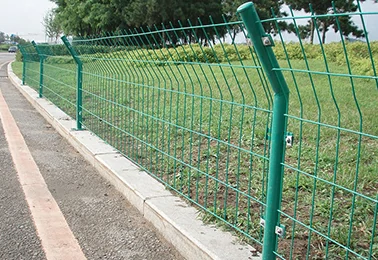 TEL:
+86-13102802206
TEL:
+86-13102802206
 Email:
fencenetting@china.com
Email:
fencenetting@china.com
 Language
Language
 TEL:
+86-13102802206
TEL:
+86-13102802206
 Email:
fencenetting@china.com
Email:
fencenetting@china.com
 Language
Language


Understanding Gabion Cage Prices Factors and Considerations
Gabion cages, which are wire mesh containers filled with stones, soil, or other materials, have gained immense popularity in various construction, landscaping, and civil engineering projects. They have become a preferred choice for retaining walls, erosion control, decorative landscaping, and even flood protection. As their usage expands, so does the interest in understanding the pricing associated with gabion cages.
One of the primary factors influencing gabion cage prices is the material used in the construction of the cages themselves. Most gabion cages are made from galvanized steel wire, which offers excellent durability and resistance to rusting. However, the quality of the wire can vary, and higher-grade materials will naturally lead to increased costs. Additionally, the wire gauge—a determinant of the cage's strength—also plays a significant role in pricing. Thicker gauges tend to be more expensive but provide better resilience, thus justifying the investment for many projects.
The size and design of the gabion cage also impact its price considerably. Standard sizes are generally more affordable due to mass production economies, while custom sizes or specialized designs can significantly raise the cost. For instance, a large gabion basket designed for a substantial retaining wall will typically cost more than a small decorative gabion intended for landscaping. The height, width, depth, and overall design complexity can all contribute to variations in the price.

Geographical location should not be overlooked when examining gabion cage prices. Transportation costs can vary widely based on how far the cages need to be shipped. For example, if a supplier is located far from the project site, the added shipping costs can considerably elevate the total expenditure. Additionally, regional demand can influence pricing; in areas with a high demand for gabion materials, prices may be higher than in regions where they are less popular.
Moreover, suppliers often offer pricing tiers based on order volume. Purchasing in bulk typically results in lower per-unit costs. Therefore, contractors or individuals planning large projects should consider buying in larger quantities to take advantage of these discounted rates. On the other hand, small scale projects may lead to higher costs per unit, so it’s essential to weigh the project’s needs against the pricing structure.
Labor costs are another aspect to consider when budgeting for gabion cages. While the cages themselves can be relatively inexpensive, the labor required for installation can increase the overall project cost. Engaging professional services for proper installation can guarantee longevity and effectiveness; however, DIY installations can lead to cost savings if sufficient expertise is available.
In summary, when exploring the pricing of gabion cages, it’s vital to recognize the interplay of materials, size, geographical location, order volume, and labor costs. Understanding these factors helps potential buyers take informed decisions and budget accordingly for their projects. Ultimately, while gabion cages may represent an upfront investment, their durability and functional versatility often yield significant long-term benefits, making them a cost-effective choice in many construction and landscaping undertakings. When considering their purchase, be sure to shop around and compare prices from various suppliers, as this can further optimize costs without sacrificing quality.